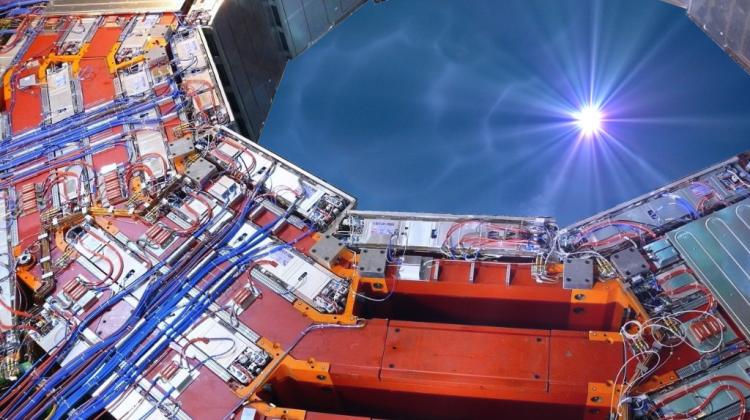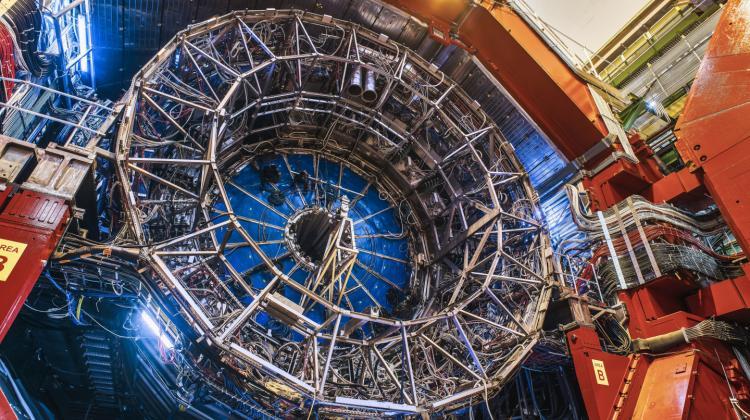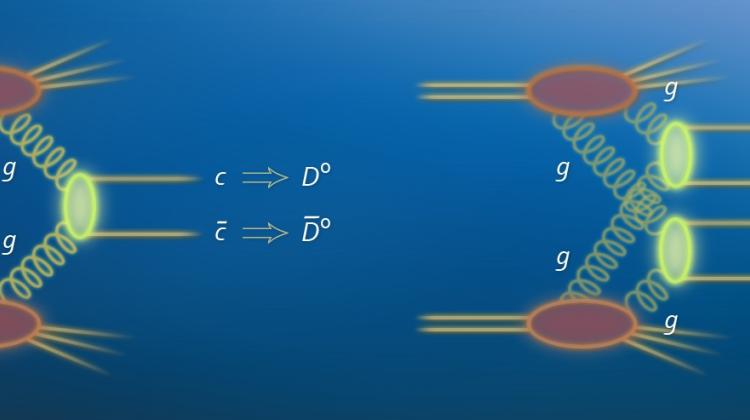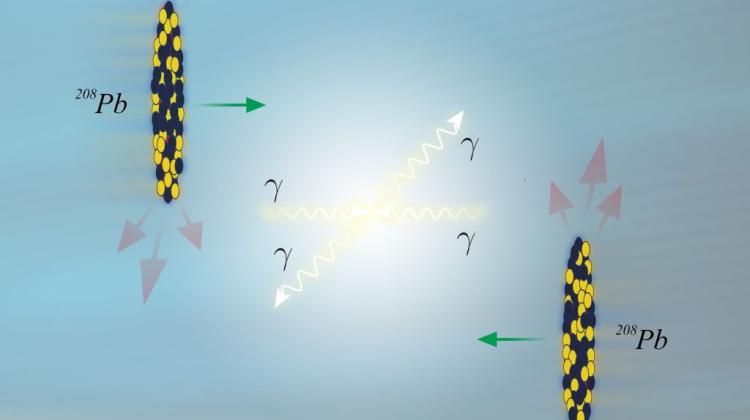Polish scientists increase the research potential of the LHC

Special selection system is responsible for instant identification of the most interesting events in the CMS detector, one of the main experiments at the LHC. The system that has a key role in the search for new physical phenomena has been thoroughly modernized by Polish scientists, increasing research capacity of the LHC.
The high-energy collisions of protons or lead nuclei a huge number of particles is formed. Physicists usually love data, because the more of them they have, the more reliable are the analyses and drawn conclusions. However, the Large Hadron Collider (LHC) of the European Organisation for Nuclear Research (CERN) there are simply too many collisions and recording each of them for later analysis goes beyond the current technical capabilities. It is necessary to pick out the most interesting events from the avalanche of data, deciding in a few microseconds - millions of times per second.
From the first days of operation of the CMS (Compact Muon Solenoid) detector - one of the four main detectors at the LHC - muon trigger in substantial part built by physicists from Poland shares responsibility for data pre-selection. This system has recently undergone a complete modernisation and is now starting operation in a new series of the accelerator exposures. Detection of muon particles that are, among other things, breakdown products of other colliding particles, will now be much more accurate.
"Muons, elementary particles with similar properties as electrons, but that approx. 200 times more massive, carry valuable information that allows us to reconstruct the course of the collision. Muons captured by our selection system allowed to discover the famous Higgs boson" - said Dr. Marcin Konecki from the Faculty of Physics, University of Warsaw (FUW).
In the CMS detector, beams of protons accelerated nearly to the speed of light intersect every 25 nanoseconds. In each collision of beam there are several, sometimes tens of interactions, and each can lead to the birth of many derivative particles. The purpose of the muon trigger is preliminary, very fast identification of muons with high transverse momentum in an avalanche of particles, those that escaped from the collision point with high energy, inclined at a substantial angle relative to the beam direction.
"In subsequent cycles LHC increases the particle energy, and the higher it gets, the more derivative particles are produced in collisions. Not only that, luminosity of the accelerator continues to increase. Luminosity is a quantity describing the intensity of the collisions, depending on the number of particles circulating in the accelerator of and their packing. As a result, now there is a much larger number of collisions in a given unit of time. All of this results in higher requirements for the muons selection system"- Dr. Konecki justified the need for modernisation.
A significant part of the current, modernized muon trigger system for the CMS experiment was designed and built at the Faculty of Physics, University of Warsaw, in cooperation with Warsaw University of Technology and the National Centre for Nuclear Research in Świerk, under a National Science Centre grant. Warsaw physicists, electronic engineers, engineers, technicians and students prepared new event selection algorithms and created software for carefully selected electronic boards, which were then subjected to thorough tests. The use of modern electronics allowed to significantly reduce the size of the device.
According to specialists from the FUW, the place of beam collisions in the CMS detector is surrounded by several cylindrical layers of detector chambers placed in the field of a giant superconducting magnet with a diameter of 7 m and a length of approx. 13 m, providing magnetic field with a huge induction (close to 4 Tesla) around the intersection of the beams. The central part of the detector, called the barrel, is closed with round, flat lids with successive detection chambers. The total length of the main part of the detector is approx. 21 m, and the outer diameter is approx. 15 m.
"To identify a muon, we need to detect signals from a number of detection chambers. They must come in a certain period of time from the collision and in the proper sequence. We must also remember that muon is a charged particle and it curves its trajectory in a magnetic field. In the CMS detector this field changes: at the beam axis it is oriented in one direction, away from the beam in the other. In this field, muon moves along a track resembling an asymmetrically stretched letter S. The chambers it activates are not on a straight line, and description of the event is difficult. Therefore, identification of muons in the trigger involves comparing their traces with patterns. All this is made even more difficult by random energy losses, multiple scattering, noise. The analysis becomes really challenging" - explained Dr. Konecki.
In 2012, the Polish physicists alerted the management of the CMS experiment to the problem of at the junction area of the barrels with lids. The geometry of the detectors within the lid (flat circles) and barrel (cylinder side surface) is homogeneous and relatively simple, but not at the "seam". In addition, various types of detectors are installed in the barrel and lids and all of them should be taken into account in the junction area - and there are up to 18 layers of detection chambers in this area. The magnetic field changes direction in the seam area. For these reasons, following the suggestion of Polish physicists, the management of the CMS experiment decided to treat the seam area as the third, next to the barrel and lid, separate area for analysis. It was named Overlap Muon Track Finder (OMTF).
The current trigger modernization required development of better and more accurate algorithms for comparing the detector chamber activation signals with a set of relevant patterns. The patterns themselves also had to be developed from scratch, in a more versatile manner allowing to complete the analysis within a given time.
PAP - Science and Scholarship in Poland
ekr/ agt/ mrt/
tr. RL
Przed dodaniem komentarza prosimy o zapoznanie z Regulaminem forum serwisu Nauka w Polsce.


















